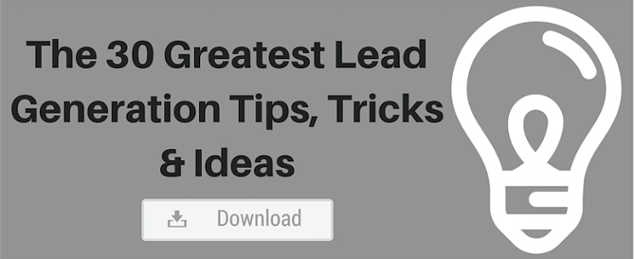So, you’ve learned about blogging, SEO, and all the other ways you can increase traffic to your website. You’re on your way to a highly visible website! But, more traffic doesn’t always mean more customers. You need to turn these viewers into leads, and the best way to do that is with an effective call-to-action (CTA).
What is a CTA? Well, it’s a link that you place somewhere on your website – possibly on the home page, or maybe in a blog post. When your site visitors click on it, they’re brought to a landing page with an offer and are prompted to fill out a form. And, once they fill out that form, they become your leads!
Sounds pretty simple, right? It is – but it can be done incorrectly. Here’s a checklist of what you want in a CTA, and what you want to avoid.
Let’s start with what doesn’t work. You don’t want a CTA that:
- Blends in with the color scheme and layout of the page
- Is small or hidden by other images and text
- Follows a vague or confusing description of the offer it links to
- Is overshadowed by several other CTAs all on the same page
- Requires too much commitment on the part of the viewer
When your CTAs don’t stand out, they don’t get as many clicks. Here’s an example of an email sent out by Macy’s that has some confusing CTAs:
Image credit: Econsultancy
The ad is for Father’s Day gifts, but there are a dozen unrelated CTAs. The link that seems to contain the offer they’re advertising, “Father’s Day Gift Guide,” is buried at the bottom of the page with nothing to catch the viewer’s eye – which means it’s unlikely to get the attention it’s aiming for. You don’t want a button that users can’t find or won’t click on.
You also don’t want to pressure your site visitors to commit to more than they’re ready for. Have you ever been to a website that immediately asked you to sign up for the mailing list?
Image credit: Positionly
A CTA that shows up before the viewer has even seen any content is rarely a good idea. Why would a viewer sign up for your emails before they’ve had a chance to explore your website? Make sure you don’t ask for too much, too soon, or you’re more likely to scare your potential leads away altogether.
Now, let’s move on to what makes a CTA as strong as possible! The best CTAs are those that:
- Have an attention-grabbing design with colors that stand out from the background
- Are placed prominently on the page
- Follow a brief but clear description of the offer
- Have a compelling reason for the user to click
- Begin with action-oriented words – for instance, “click” or “download”
- Are smart and responsive to the buyer’s journey
You can create more targeted offers with smart CTAs, which track your visitors as they progress through the buyer’s journey to offer them the most relevant content. The best CTAs combine responsiveness with a layout like this example:
Image credit: Wordstream
Here, the CTA button is clearly defined from its surroundings and placed in the center of the page, right where a user would expect to see it. The text offers clear reasons why this offer is worth considering, and the CTA itself begins with an action verb: “Send.” It hits every point on our checklist of CTA essentials.
So, now that you know the top CTA do's and don'ts, go out and make your calls-to-action smarter and more clickable!
Want to attract even more leads? Download this guide for lead-generating tips and tricks!
